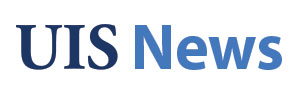Accessibility Checks for Gold Courses
Title II of the Americans with Disabilities Act (ADA) legally requires digital accessibility for all web content, including Canvas course materials. All items used in courses must be accessible, including:
- Items you create, upload, or link to, including Word, Excel, PowerPoint, websites, videos, etc.
- Third-party content from publishers and other sources, including eBooks and homework or assessment systems selected through the UIS Bookstore.
If you would like assistance with making your Canvas content and course materials accessible, the Digital Accessibility Remediation Team (DART) can assist you with remediating gold course content. Gold coursesat UIS are Canvas sites used for developing and sharing course content. Students are not enrolled in gold courses. The gold course content is updated and copied to courses for each academic term. If you actively use gold courses and would like for them to be checked for accessibility, email COLRS at colrs@uis.edu to have your course added to the Digital Accessibility Remediation Team queue.
Book Time to Record Lectures of All Kinds
Get a jump start on the fall rush. Contact COLRS multimedia specialist Scott Moomaw to record videos of all kinds -- narrated lectures, green screen work, on-campus location filming, and lightboard lectures. He can also help you to edit current videos. Scott's professional background in video recording and editing are sure to help your lectures shine!
A lightboard is a specialized teaching and presentation tool used primarily in educational and instructional settings. It is designed to help educators and presenters create engaging and visually appealing content while facing their audience and writing on a board. Ideas for using the lightboard include:
- Lectures and Course Content Creation: Professors can use lightboards to create engaging lectures and course content. They can write and draw diagrams in real-time while facing the camera, making complex concepts more understandable to students.
- Demonstrations: Lightboards are great for demonstrating experiments, problem-solving processes, or step-by-step procedures. Professors can draw diagrams or write equations while explaining each step, enhancing comprehension.
- Collaborative Projects: Students can use lightboards to create their own presentations or tutorials as part of group projects. This encourages collaboration, research, and creative content creation.
- Review Sessions: Professors can use lightboards for review sessions before exams, summarizing key points, and clarifying difficult topics.
- Research and Visual Data Presentation: Researchers can use lightboards to explain their findings visually and engage with their peers and students during presentations.
Learn research-based methods for increasing student learning in your instructional videos on our Multimedia Learning Principles page.
COLRS Services
Office Hours for Faculty Support
The Center for Online Learning, Research, and Service provides drop-in office hours weekdays from 10-10:50 a.m. Central. Join Carrie, Taylor, and Emily for support with course design, technology tools, accessibility, and Canvas. Click here to join the Zoom room.
Digital Accessibility for Course Content
Digital accessibility is legally-required for all Canvas course materials, including items you create, upload, or link to, as well as third-party content from publishers and other sources. As you prepare for the upcoming semester, the digital accessibility remediation team (DART) can help ensure that your courses are accessible for all students. They specialize in remediating documents, captioning video files, and providing course accessibility checks. Contact DART today for assistance by emailing colrs@uis.edu.
As always, you can also email or call COLRS for assistance throughout the term!



